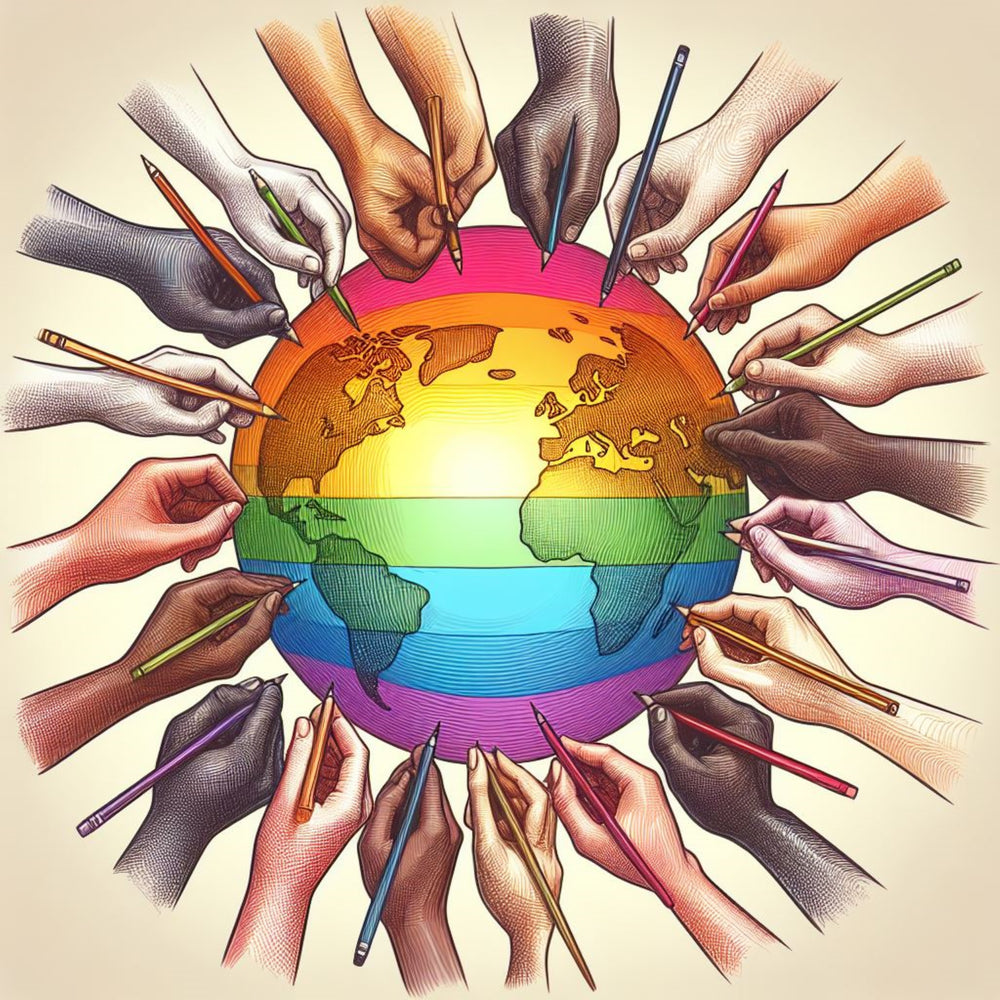On This Day In History, January 30, 1933, 'The Lone Ranger' Debuts, Trotting Into American Cultural Lore
The Lone Ranger: Debuting On January 30, 1933, A Legendary Character Enters American Cultural Lore
On January 30, 1933, a masked figure rode onto the American cultural stage and forever cemented his place in history. The Lone Ranger, a legendary character, made his debut on this day, captivating audiences with his thrilling adventures and unwavering pursuit of justice. Created by George W. Trendle and Fran Striker, The Lone Ranger quickly became an iconic figure in popular culture.
Clad in a black mask and cowboy attire, he roamed the Wild West on his trusted horse Silver, accompanied by his loyal Native American companion Tonto. Together, they fought against outlaws and protected the innocent, leaving behind their signature silver bullets as a mark of justice. The Lone Ranger's popularity soared through various mediums such as radio shows, comic books, novels, and eventually television series.
His story embodied the values of heroism, morality, and integrity that resonated deeply with audiences across America. Beyond entertainment value, The Lone Ranger symbolized the triumph of good over evil during challenging times. He represented hope for justice in an era plagued by economic depression and political unrest. Even today, The Lone Ranger remains an enduring symbol of courage and righteousness.
His legacy continues to inspire new generations who are captivated by tales of honor and adventure.
Trotting Into American Cultural Lore: The Lone Ranger's Impact On The Western Genre
The Lone Ranger, a fictional masked hero of the American West, made his debut on January 30, 1933, trotting into American cultural lore and leaving an indelible impact on the Western genre. With his iconic black mask, white hat, and silver bullets, the Lone Ranger quickly became a beloved symbol of justice and heroism. The Lone Ranger's impact on the Western genre cannot be overstated.
He embodied the ideals of righteousness and morality that defined the American frontier. Through his adventures alongside his faithful Native American companion Tonto, the Lone Ranger fought against lawlessness and corruption with unwavering determination. His popularity skyrocketed with a successful radio series that captivated audiences across America. The character's transition to other media platforms such as comic books, television shows, movies, and merchandise further solidified his place in American pop culture.
Beyond entertainment value, the Lone Ranger played a significant role in shaping public perceptions of the Old West. His portrayal as an honorable lawman fighting for justice contributed to romanticizing this era in history. To this day, the influence of the Lone Ranger can be seen in countless Western-themed films and TV shows.
From Pulp Magazines To Radio Drama Series: The Lone Ranger's Journey To Becoming An Iconic Figure

The Lone Ranger, a masked hero fighting for justice in the Wild West, made his debut on January 30, 1933. However, his journey towards becoming an iconic figure was not limited to his radio drama series. It began in the pages of pulp magazines. Created by writer Fran Striker and George W. Trendle, The Lone Ranger first appeared in a pulp magazine called "The Lone Ranger" and quickly gained popularity among readers.
His adventures were filled with thrilling action and moral lessons, capturing the imagination of many. Soon after gaining fame in print media, The Lone Ranger made his transition into radio drama. On February 2, 1933, he rode onto the airwaves for the first time. The radio show became an instant hit and allowed the character to reach a wider audience. The success of The Lone Ranger on radio paved the way for other adaptations such as movies, comic books, and television shows.
His iconic black mask, white hat, and silver bullets became synonymous with justice. Today, The Lone Ranger remains firmly entrenched in American cultural lore as a symbol of heroism and integrity.
The Lone Ranger And Tonto: Unmasking The Horseback Heroes Of The Old West
On January 30, 1933, a new era in American pop culture began as "The Lone Ranger" made its debut on radio. The iconic masked hero rode into the hearts of millions, leaving an indelible mark on American cultural lore. However, behind this legendary character's success lies a fascinating story of friendship and camaraderie that often goes unnoticed. While the Lone Ranger captured imaginations with his silver bullets and sense of justice, it was his loyal companion Tonto who brought depth to their adventures.
Tonto, an Apache Native American, provided a unique perspective on the Old West. Together they defied stereotypes and fought for truth and justice in a time when lawlessness prevailed. Their partnership demonstrated unity in diversity, breaking barriers of race and culture. The stories told through "The Lone Ranger" shed light on social issues such as racism and injustice prevalent during that period.
Unmasking these horseback heroes reveals their significance beyond mere entertainment; they became symbols of hope for many Americans during challenging times. The legacy of "The Lone Ranger" endures today through various adaptations across different media platforms.
Rescue Missions And Morality: How The Lone Ranger Transformed Into A Popular Culture Icon
The Lone Ranger, a masked vigilante mounted on his trusty steed Silver, has become an enduring symbol of justice and heroism in American popular culture. However, the character's journey from a radio series debut on January 30, 1933, to an iconic figure was not without transformation.
Rescue missions lie at the heart of the Lone Ranger's appeal. Every episode featured him swooping in to save innocent victims from perilous situations, often battling ruthless outlaws or corrupt officials. These daring acts of bravery resonated deeply with audiences during a time when America was grappling with economic depression and societal unrest.
Yet it was not just his physical prowess that captivated audiences; it was his unwavering commitment to moral principles that truly elevated him to cultural lore. The Lone Ranger embodied values such as truth, fairness, and compassion. He represented an idealized version of justice that transcended the limitations of reality.
As the Lone Ranger evolved over time from radio to television and movies, his popularity soared. His character became a role model for generations by promoting altruism and standing up against injustice. Today, this masked hero remains an emblematic figure who inspires individuals to strive for goodness in their own lives while reminding us all that even in our darkest moments, there is always hope for redemption.





